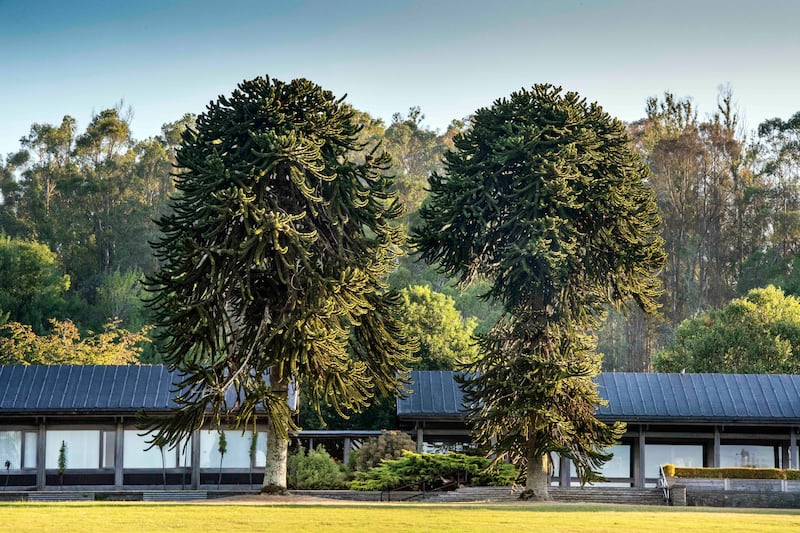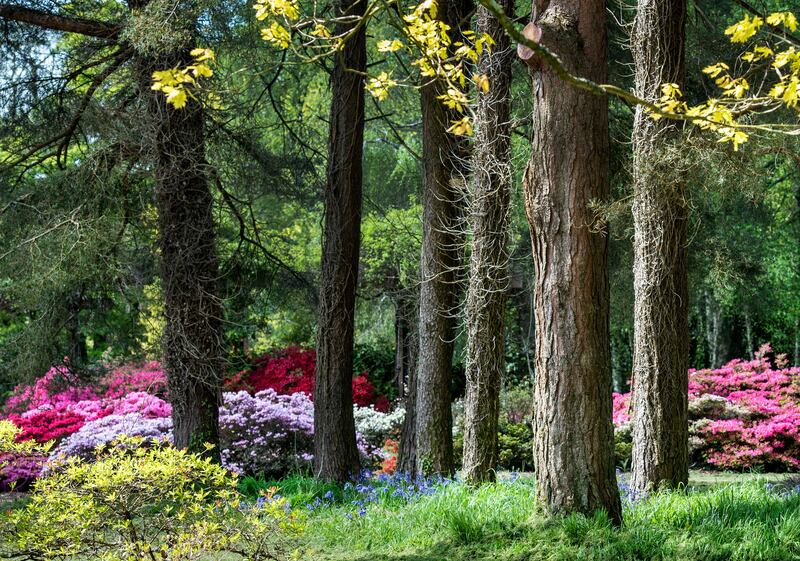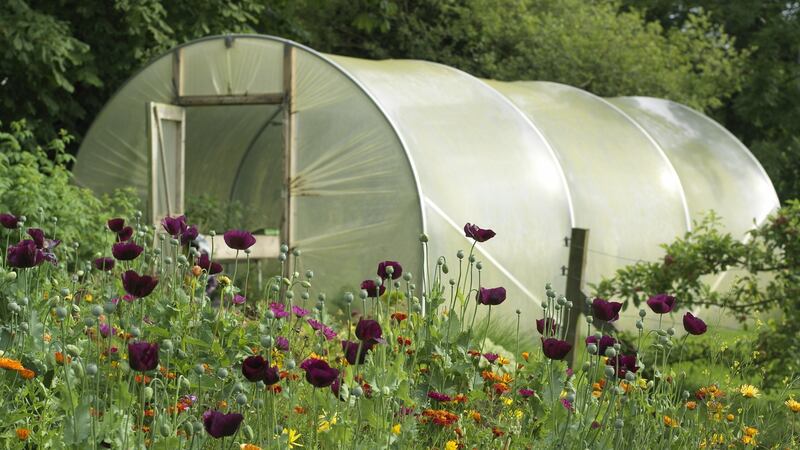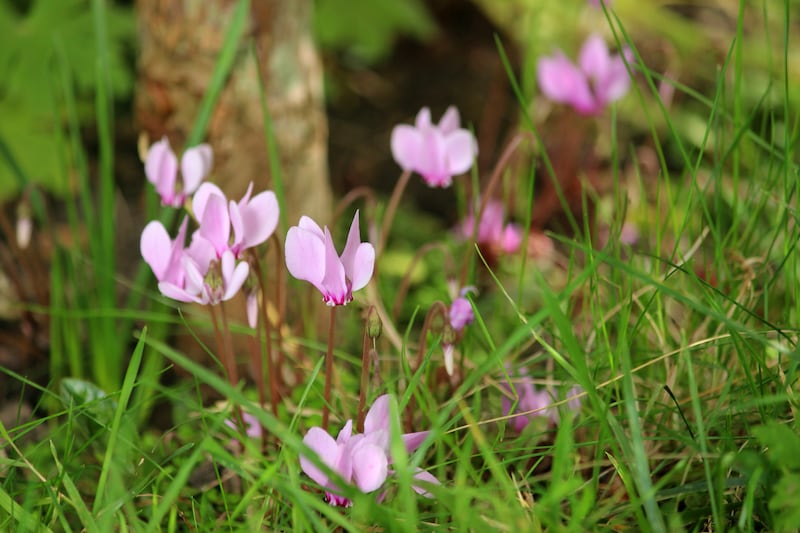In a world grappling with war, climate change and the far-reaching consequences of a global pandemic, we’re confronting the reality that humankind is just one of many life forms facing some form of existential threat.
Take, for example, trees. According to a recent international report, one in three of the planet’s 60,000 different tree species is already at risk of extinction, with 440 perched “right on the brink”, meaning there are fewer than 50 individual specimens remaining alive in the wild.
These critically endangered tree species are scattered right around the world. The list includes Malawi’s national tree, the Mulanje cedar, now under extreme threat as a result of wildfires and intensive felling that has also caused soil erosion, flash flooding and consequent loss of life.
It includes the Menai whitebeam (Sorbus arvonensis), which can only be found growing wild along the shores of the Menai Strait, a small, narrow stretch of shallow tidal water and an area of significant ecological importance that separates the Isle of Anglesey from mainland Wales. It includes tropical rainforest species native to Borneo imperilled by expanding palm oil plantations, oaks in South and central America made vulnerable by habitat loss and deforestation, mahogany and rosewood species in Brazil and the Caribbean under pressure from the worldwide demand for timber, as well as species of magnolias and camellias endangered by unscrupulous commercial plant-collectors.
Actor Armie Hammer resurfaces as host of celebrity podcast
Heart-stopping Halloween terror: 13 of cinema’s greatest jump scares
Doctor Odyssey’s core message: just imagine Pacey from Dawson’s Creek holding you tight and saying, ‘Shhh, it’s okay’
Conor Niland’s The Racket nominated for William Hill Sports Book of the Year
Presented with such bleak statistics, the situation might seem hopeless, but it’s not. The cheering news is that far-reaching efforts are being made to conserve these endangered species, a worldwide movement in which Ireland is also playing its part through the Office of Public Works-managed John F Kennedy Arboretum in New Ross, Co Wexford.


Botanic arks
For those of us who aren’t avid tree aficionados, arboriculturists, dendrologists, foresters or botanists, these kinds of arboreta might – dare I say it? – sound a little dull. A gardening friend, for example, once described them as “gloomy tree zoos”. But that’s to do them an injustice. As places where threatened species of trees are given a safe berth while offering opportunities for scientists to study and conserve them for the future, they are botanic arks, both precious and awe-inducing. As beautiful, nature-friendly habitats, they also help support biodiversity and play a valuable role in countering pollution and fighting the worst effects of climate change.
Established in the wake of John F Kennedy’s death in 1968, the JFK Arboretum covers an area of more than 240 hectares (593 acres) and is tended by its head gardener Kevin Naughton and his 18-person strong team. Representing Ireland’s largest collection of catalogued trees – essentially the country’s unofficial national arboretum – it’s home to more than 5,000 types of trees and shrubs representative of the temperate regions of the world and planted in botanic sequence.
“It’s a world-class arboretum whose significance is only beginning to be full appreciated. Yet so many people still don’t even know it exists,” says its curator Dr Darach Lupton, who is also curator of the National Botanic Gardens, Glasnevin, and the National Botanic Gardens Kilmacurragh.”
In a further step towards consolidating its global role in conservation, last year the JFK Arboretum formally became part of the Arboretum Accreditation Program founded by ArbNet, the global network and “interactive, collaborative, international community of arboreta and tree-focused professionals”. Earlier this year, the arboretum’s role took on an even greater significance with the additional phased planting in a 4-hectare 9.8-acre plot of 1300 trees representing 21 of the world’s most endangered species of conifers, the single largest planted collection of the International Conifer Conservation Programme (ICCP) in Ireland and the United Kingdom, possibly in the world. Seven hundred of these very special conifer trees were planted this spring, with a further 600 to be planted in the spring of 2023. All have been propagated from seed or cuttings legally collected in the wild in their countries of origin, a list that includes China, Chile, Japan, Mexico and North America.
In this botanical treasure trove is the aforementioned Mulanje cedar (Widdringtonia whytei). Others include the stinking cedar (Torreya taxifolia), a relict of the glacial age native to small parts of Florida and Georgia, now considered be the rarest species of conifer in North America as a result of the combined effects of habitat loss, disease and extreme weather events; the Taiwan plum-yew (Cephalotaxus harringtonia var wilsoniana) whose population in the wild is under threat from logging/habitat loss; and the Moroccan fir (Abies pinsapo var marocana), which over a period of 60 years has suffered a 70 per cent decline as a result of fires and felling. It’s now only found growing in the wild in two small areas of the Rif Mountains of northern Morocco.
The Moroccan fir is as good an example as any of the many diverse treasures contained within the world of trees and the importance of conserving these under-threat species before they are lost forever. In Moroccan folk medicine, the essential oils extracted from its seeds are traditionally used to treat respiratory problems, while it’s also of value to the perfume industry.
What other mysteries does it hold? Without conservation programmes supported by places such as the John F Kennedy Arboretum, we may never know. Or as Dr Lupton puts it, “The ICCP collections are a vital breeding population for the future . . . and unlike a seed bank we can study their growth, monitor their flowering, fruiting and ultimately produce seed for replanting in ecological restoration programmes.”
*The John F Kennedy Arboretum, New Ross, Co Wexford, is open to the public every day with a glorious display of autumn colour from its maple and birch collections at this time of year. Other trees/ shrubs in the collection of particular autumn interest include tulip tree (Liriodendron tulipfera), sweet gum (Liquidambar styraciflua) and Persian ironwood (Parrotia persica) (Visiting hours October-March, 10am-5pm, see facebook.com/jfkarboretum/ for further details)

This week in the garden
October is always a challenging month for plants growing in polytunnels and glasshouses, with cool/frosty nights but mild, bright days resulting in abrupt swings in temperature. To keep your plants happy, it’s important to keep these under-cover growing spaces well-ventilated during the day to prevent plant stress as well as to reduce the risk of a build-up of pests and disease. For the same reason, make sure to only water plants in the morning and regularly remove any dead, damaged or diseased plant material, bagging it as you work through the space to prevent it potentially spreading to healthy plants. As temperatures fall in the evening, make sure to close up doors and vents to protect plants and retain heat. When harsh frosts threaten, cover vulnerable plants with horticultural fleece.

Autumn-flowering cyclamen (Cyclamen hederifolium) is one of the quiet pleasures of the garden at this time of year with its dainty, perfumed flowers in shades of pink and white that emerge before its delicately marbled, long-lasting, heart-shaped leaves. Available to buy as pot-grown plants from good garden centres, this low-growing, hardy, tuberous perennial is happiest in light shade and looks best planted en masse beneath the canopy of established deciduous shrubs/trees/hedging or naturalised in grass. It likes a moist but free-draining, humus-rich soil but will readily tolerate drier growing conditions as long as the soil is enriched with a mulch of leaf mould, home-made garden compost or very well-rotted manure.
Dates for your Diary
- Sunday, October 16th (11am-2pm), Guardian Angels Pastoral Centre, Newtownpark Avenue, Stradbrook, Blackrock, Co Dublin, Irish Garden Plant Society (IGPS) plant sale with rare, unusual and Irish heritage plants for sale, see irishgardenplantsociety.com
- Thursday, October 27th (8pm), Garryduff Sports Centre, Rochestown, Cork, T12ER22, “For the Love of Plants; a Detailed Look at Garden Plants and How Best to Grow Them”, a talk by the west Sussex-based gardener, garden writer and lecturer Benjamin Pope on behalf of Cork Alpine Hardy Plant Society, admission €10
- Also Thursday 27th-Saturday 29th, October, National Botanic Gardens, Glasnevin, Dublin, “Planting for Tomorrow’s World; A Global Perspective”, the Northern Ireland Heritage Gardens Trust Annual Conference takes place with a range of speakers, tickets available via nihgt.org
- Friday, November 6th to Sunday, November 8th, Anamadu Fields, Kilnaggross, Co Leitrim “Establishing a Cut-Flower Business”, a three-day intensive course (€320) covering all aspects of establishing a cut-flower business with flower farmers Ciaran and Kealin Beattie of Leitrim Flowers, pre-booking essential, see leitrimflowers.ie






